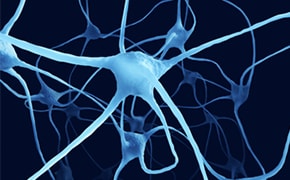細胞シグナル伝達

細胞シグナル伝達とは、接触などの機械的シグナル、またはホルモン、成長因子、および神経伝達物質などの化学的シグナルにより誘発される生物内の細胞間の伝達機構を指します。シグナル伝達経路では、カスケードプロセスを介して刺激が伝達され、正しく適切な反応が生じます。細胞シグナル伝達経路の例としては、脂質シグナル伝達、インスリンシグナル伝達、ストレスシグナル伝達、増殖シグナル伝達、TORシグナル伝達、およびチェックポイントシグナル伝達などがあります。この分野の研究としては、細胞動態の検討およびモデル化、細胞シグナル伝達の不均一性の解析、細胞シグナル伝達と他の生物学的プロセス間のクロスオーバーに関する研究、ならびにシグナル伝達動態の系統的研究が多く行われています。
関連資料
- DNA損傷応答(DDR)経路によるがん研究と細胞シグナル伝達研究の主要なターゲットをご覧いただき、DNA損傷チェックポイントに関与するATM、ATR、およびp53のメカニズムを深堀りします。
- Lipopolysaccharide (LPS) is the major component of the outer membrane of Gram-negative bacteria. Lipopolysaccharide is localized in the outer layer of the membrane and is, in noncapsulated strains, exposed on the cell surface.
- Acetylcholine is synthesized from acetyl coenzyme A and choline by the enzyme choline acetyltransferase. In addition to its synthesis in the liver, choline employed in acetylcholine production is derived from dietary sources.
- コラゲナーゼガイド。動物組織を接着する天然コラーゲンを分解する酵素であるコラゲナーゼは、さまざまな微生物や多様な動物細胞によって生成されています。
- There are five identified glycosaminoglycan chains (see Figure 1): Hyaluronan is not sulfated, but the other glycosaminoglycan chains contain sulfate substituents at various positions of the chain.
- すべて表示 (147)
関連プロトコル
- Assay Procedure for Protease
- Assay Procedure for Cholesterol Oxidase
- The Protease Fluorescent Detection Kit provides ready-to-use reagents for detecting the presence of protease activity. This simple assay to detect protease activity uses casein labeled with fluorescein isothiocyanate (FITC) as the substrate.
- すべて表示 (10)
技術資料・プロトコールの検索
ログインして続行
続きを確認するには、ログインするか、新規登録が必要です。
アカウントをお持ちではありませんか?